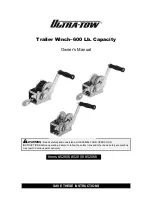
17
ENGLISH
ENGLISH
5.7.
TESTING THE AUTOMATION SYSTEM
Once installation is complete, affix the danger warning
decal on the top of the housing (Fig. 20).
Carry out a thorough functional check of the barrier unit
and all accessories connected to it. Give the page entitled
“End-user guide” to the customer and demonstrate how
to operate the barrier correctly, drawing the customer’s
attention to the points of potential danger.
6. MANUAL OPERATION
If the barrier needs to be operated manually as a result of
a power failure or malfunction, use the unlock device as
follows.
The key provided may be triangular (A, fig. 21 - standard),
or personalised (B, fig. 21 - optional).
Insert it in the lock and turn it 1 revolution anticlockwise(Fig.
21).
- Open or close the barrier manually.
7. RETURNING TO NORMAL OPERATION
To prevent an accidental impulse from activating the
barrier, turn off the system’s electrical power supply before
engaging the lock system.
A) triangular key (standard):
- turn the key clockwise until it stops, then remove it (A, Fig.
21).
B) customized key (optional):
- turn the key clockwise until it stops.
- turn the key anticlockwise very slowly to the point where
it can be removed (B, Fig. 21).
Table 8 P Logic (PARKING)
(this logic does not allow pre-flashing)
Table 9 Operation of Warning Light
(*) Warning light connected between terminals 8 and 10
(**) Warning light connected between terminals 9 and 10
5.5.
ADJUSTMENT OF TRANSMITTED TORQUE
Use the two by-pass screws
(fig. 18) to regulate the
hydraulic transmitted
torque adjustment system.
The red screw adjusts
torque during closure.
The green screw adjusts
torque during opening.
Turn the screws clockwise
to increase torque.
Turn the screws
anticlockwise to reduce
torque.
5.6.
ADJUSTING DECELERATION
1)
The deceleration of barrier 620 SR is factory-set.
However, if small adjustments are required, turn the
adjusting screws 1 and 2 in fig. 19.
Turn clockwise to increase deceleration, anticlockwise
to reduce deceleration.
IMPORTANT: A 1/2 turn of the screw is sufficient for the
adjustment.
2)
The ideal setting of the limit switch cams (3 and 4, fig.
19) is when the microswitch is tripped at the same time
the mechanical travel limit is reached.
Fig. 18
BY-PASS
Fig. 19
1
2
3
4
Fig. 21
BLOCCA / LOCK
BLOQUE / VERRIEGELT
BLOQUEAR
SBLOCCA / UNLOCK
DEBLOQUE / ENTRIEGELT
DESBLOQUEAR
B
A
beam
status
impulse
PANIC
opens
no effect
reverses movement
no effect
opens
closed
open
closing
opening
stopped
no effect
no effect
stops movement
stops movement
no effect
no effect
recloses
no effect
opens, recloses at
once
recloses
Beam opens and/
or remains open.
Alarm condition is
activated
(see relevant
paragraph)
CLOSED
STOP
OPEN
BEAM STATUS
N.O. CONTACT (*)
N.C. CONTACT (**)
closed
opening or open
pre-flashing (if selected)
and/or closing
off
on
on
off
flashing
Fig. 20






















